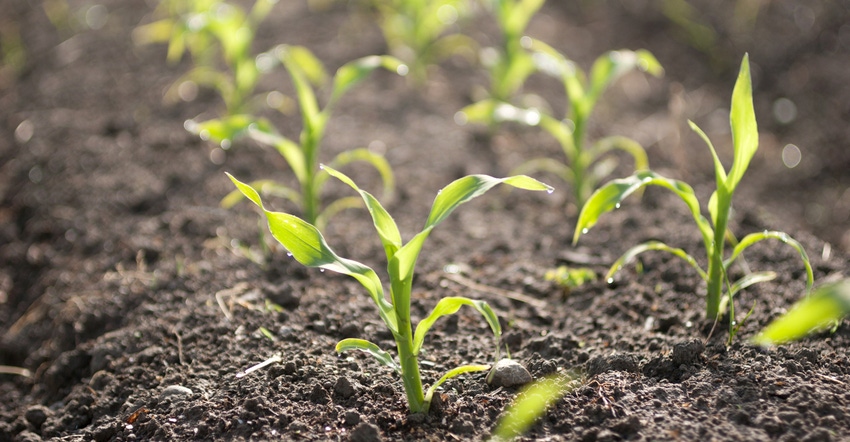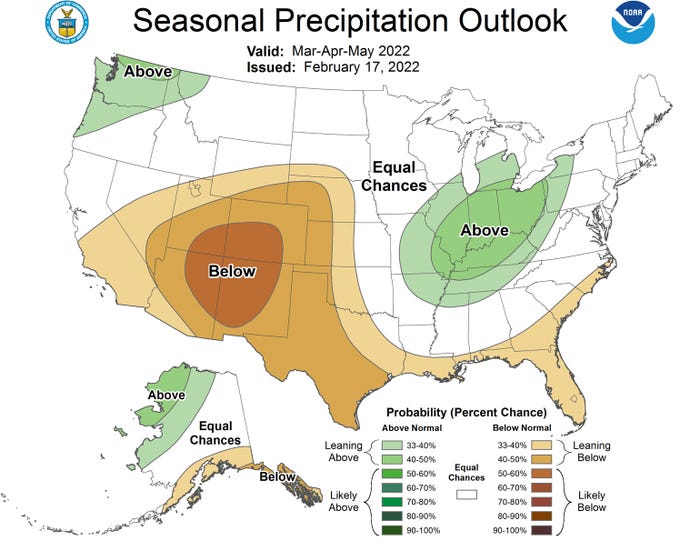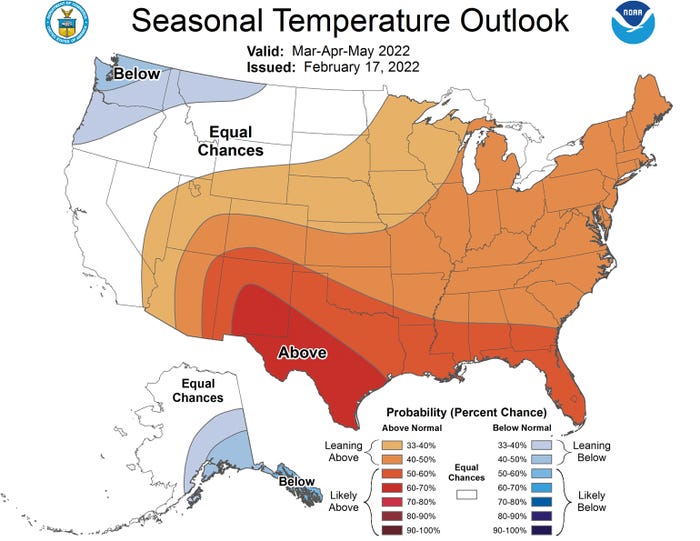
What’s the forecast for the coming growing season? A warm start is likely. Then, there may be a transition to cooler, wetter conditions by the time April and May arrive.
Anything can happen, of course, but Kyle Imhoff, Pennsylvania state climatologist, says that La Nina conditions — which favor storminess and above-normal precipitation in the Ohio Valley and can lead to above-normal temperatures in the Northeast — are a big factor hanging over everything.
“No extremely hot or dry spells, and it doesn’t seem like exceptionally wet conditions,” Imhoff says.
Jessica Spaccio, climatologist with the Northeast Regional Climate Center, says the current prediction is calling for above-normal temperatures in most of New York and into New England, but split on chances of precipitation. The western part of the region, including western New York, she says, has the best chance for above-normal precipitation.
The National Oceanic and Atmospheric Administration’s Climate Prediction Center’s three-month outlook is calling for above-normal temperatures for the entire region and above-normal precipitation in Ohio and southern Michigan.


What is La Nina?
According to the Regional Climate Quarterly put out by the Northeast Regional Climate Center, a La Nina develops when sea surface temperatures in the middle of the Pacific Ocean become cooler than normal. Although that area is thousands of miles away, it can affect weather closer to home.
In typical La Nina years, the jet stream shifts north and in a wave-like configuration, typically resulting in more storminess and above-normal precipitation in the Ohio Valley.
“That’s part of the reason why, when we see that wet signal in March it’s because of these La Nina conditions that may be leading to an active storm track through the Midwest that will lead to at least parts of western Pennsylvania being wetter than average, but La Nina is certainly one of the major factors there,” Imhoff says.
La Nina — and the opposite El Nino, which is a warming of the middle Pacific Ocean — usually affects weather the most in winter and spring.
Much of central and eastern Pennsylvania has seen large snowstorms stay to the east and southeast. Imhoff says the 60-day precipitation trend has shown much drier conditions in the eastern part of the state and a wetter western part of the state. A lot of precipitation this winter has been mixed, which he says is typical of a weather pattern during a La Nina year.
Another factor that will affect the weather, Spaccio says, is the North Atlantic Oscillation, which is positive right now. This positive phase usually favors above-normal temperatures in the eastern U.S.
Drought unlikely
While drought is widespread out West, neither Imhoff nor Spaccio expect any severe widespread drought close to home, even though parts of eastern Pennsylvania, southern New Jersey and northern New England have pockets of “abnormally dry” conditions, and even smaller pockets of “moderate” and “severe” drought.
“Based on the fact that we're in La Nina and going back to neutral, that's generally not favorable for us to see extended periods of dry weather, or even relatively hot weather, so to see drought conditions set up once we head into spring and summer right now it doesn't seem like that's the case," Imhoff says, adding that back-to-back La Nina years, of which we’re in right now, often favor cool and much wetter conditions.
About half of the southern portion of Michigan and the lower portion of the Upper Peninsula are “abnormally dry,” with “moderate” drought close to Lake Michigan.
About the Author(s)
You May Also Like






